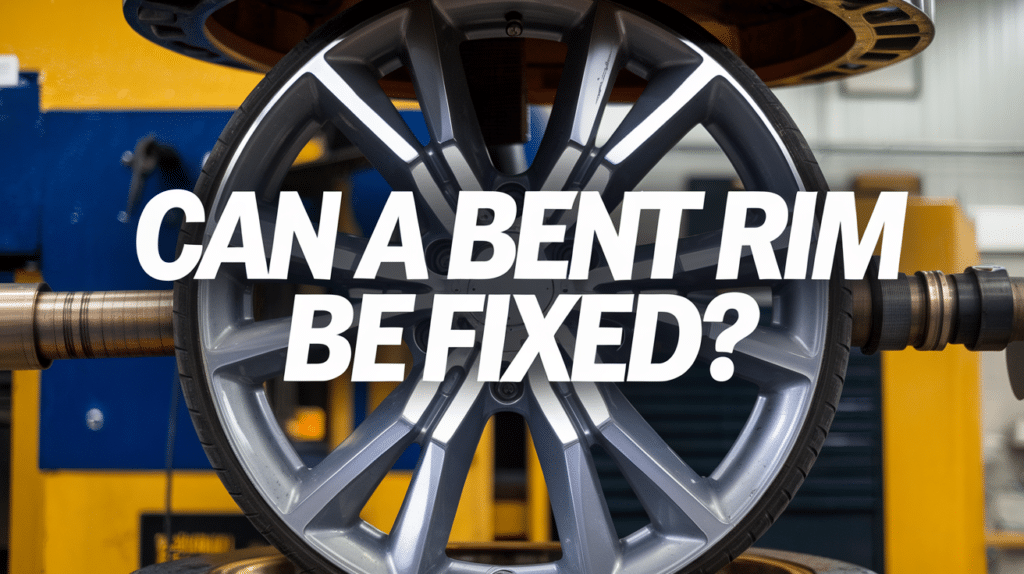A bent rim can be a big problem for your car. It happens when the metal part of your wheel gets damaged, usually from hitting something like a pothole, curb, or rough road.
When a rim is bent, it can affect your car’s safety and performance, causing problems like vibrations, uneven tire wear, and poor handling. You might wonder if a bent rim can be fixed, and the good news is that, in many cases, it can.
In this blog, you can look at what causes a bent rim, how to tell if your rim is bent, and whether you should repair it or replace it. I’ll also cover the best options for fixing a bent rim and how to avoid damage in the future.
What is a Bent Rim and How is It Caused?
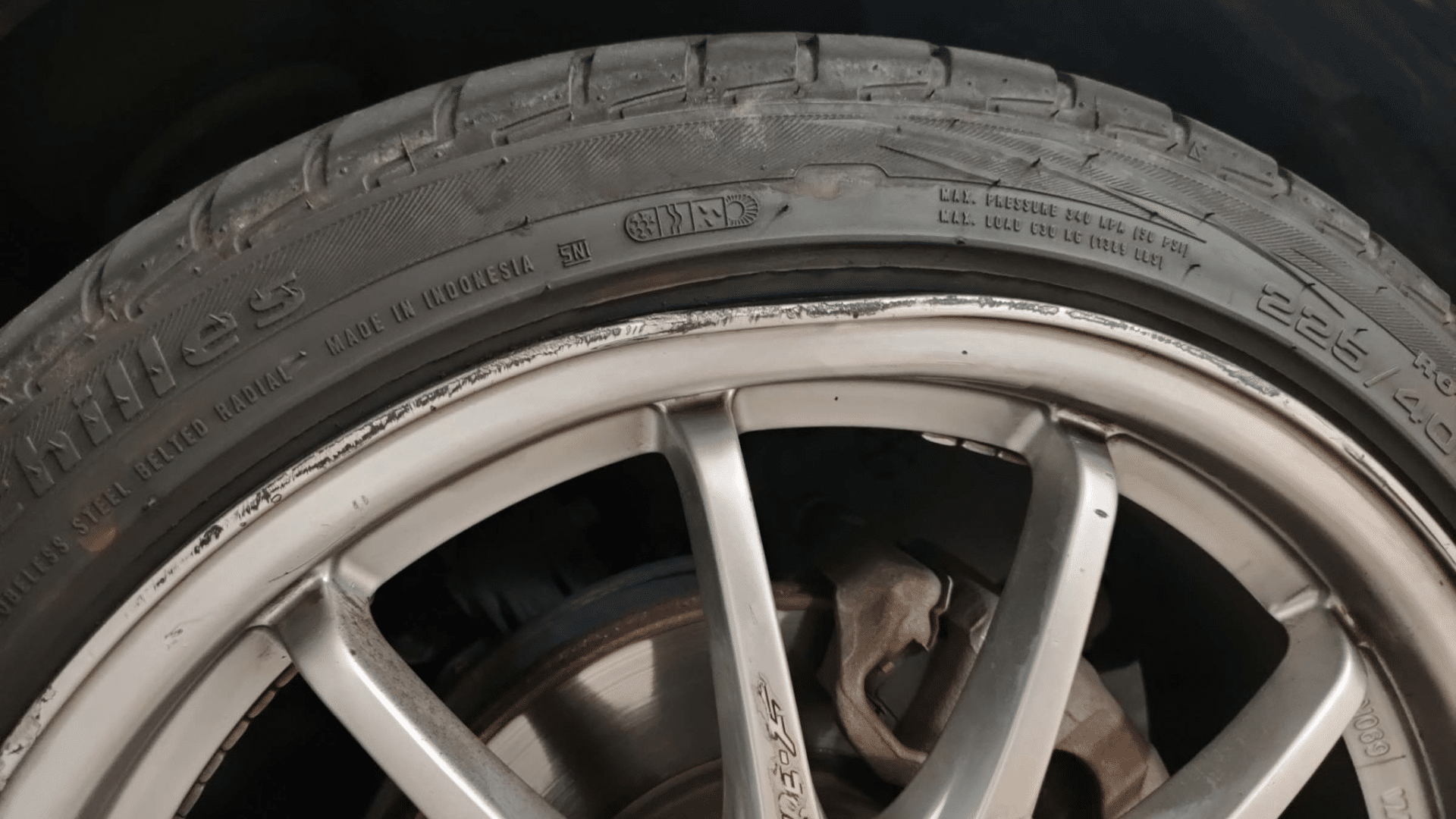
A bent rim is when the metal part of your wheel gets deformed, usually due to a heavy impact. This deformation can happen when the wheel hits something hard, like a pothole, curb, or even a rough patch of road.
The damage may be visible to the naked eye as a bend, dent, or crack. A bent rim can cause uneven tire wear and vibrations and even make it harder to control your car. The most common causes of bent rims are:
- Potholes: Driving over large potholes can cause the rim to bend because of the sudden force.
- Curbs: Hitting a curb, especially while turning, can also cause a rim to bend.
- Rough roads: Driving over roads with large cracks or bumps can stress the rims and cause them to bend.
- Low tire pressure: If your tires are under-inflated, they won’t absorb shocks as well, increasing the chance of bending a rim when hitting something.
Now that you understand what a bent rim is and how it happens, let’s move on to how to spot the signs of one.
Signs of a Bent Rim
Sometimes, it’s obvious when your rim is bent, but you might not notice the damage immediately in other cases. Some common signs that your rim might be bent are:
1. Vibration or Wobbling While Driving: If you feel shaking or unusual movement, especially at higher speeds, it could be a sign that your wheel is not spinning evenly. The bent part of the rim causes the wheel to wobble.
2. Uneven Tire Wear Patterns: This happens because the rim is not holding the tire evenly against the road. Over time, the tire might develop bald spots or other signs of uneven wear.
3. Visual Inspection Indicators: A bent rim might show signs of a dent or crack. Even small bends can affect how the wheel sits on the car, so inspecting your rims for any noticeable damage is important.
Assessing the Severity of Rim Damage
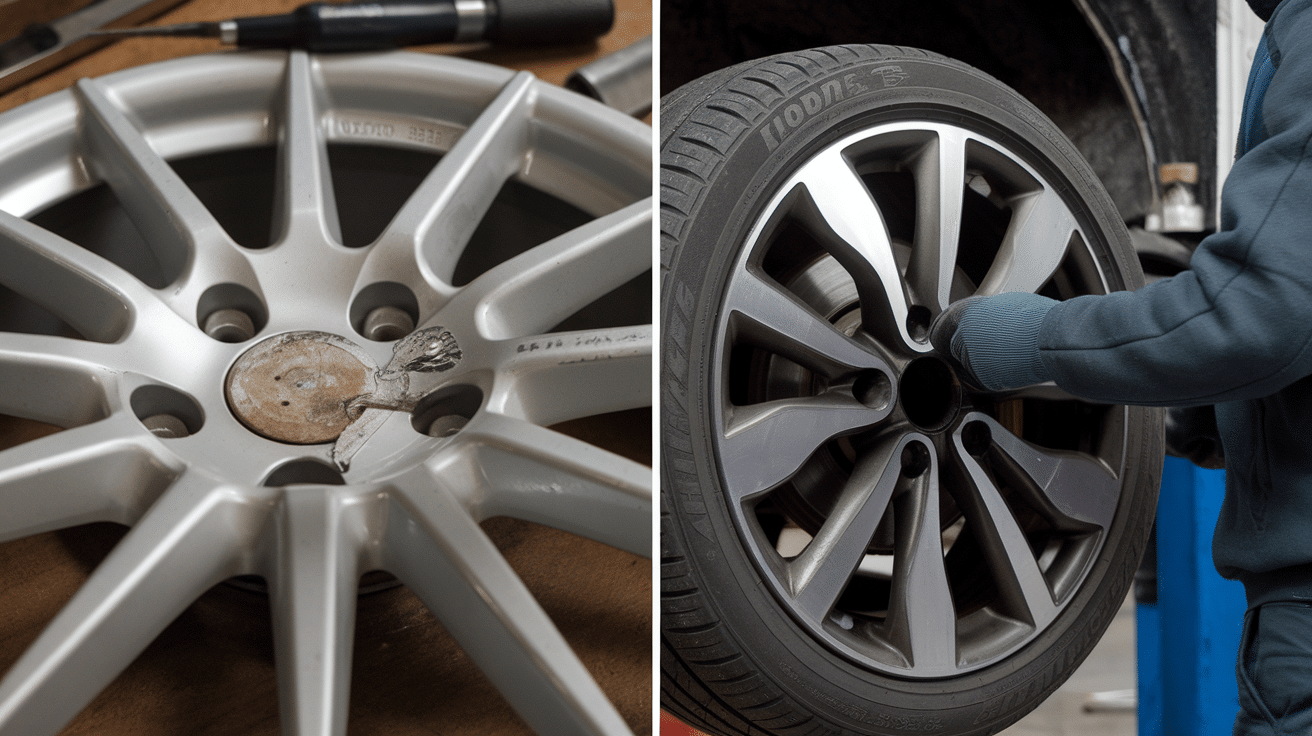
When you realize your rim is bent, it’s important to assess how bad the damage is. Not all bent rims are the same. Some are only slightly bent, while others may be cracked or severely damaged. How to determine the severity of the damage:
Minor Damage
Minor damage means the rim is slightly bent but hasn’t caused any cracks or serious structural issues. This type of damage can usually be fixed with a simple straightening process. If the bend is shallow and does not affect the rim’s strength, it’s often repairable and inexpensive.
Major Damage
Major damage occurs when the rim is significantly bent or cracked. This could happen after hitting a large pothole or curb at high speed. If the rim is cracked or deeply deformed, it might not be safe to repair. In this case, the rim might need to be replaced. Severe damage could also lead to tire blowouts or other safety issues, so it’s important to address this type of damage right away.
Now, let’s move on to what you can do about your bent rim. Can you repair it, and if yes, then how?
Can You Fix a Bent Rim?
A bent rim can be a serious issue for your car, but the good news is that, depending on the extent of the damage, it can usually be fixed.
Minor Bends Can Be Fixed
If your rim has a minor bend, it’s often possible to repair it. A professional mechanic can often use special tools to straighten the rim and restore it to its original shape. This process is usually affordable and doesn’t take much time. For small bends, DIY kits are available, but these are only recommended if you have the right tools and experience.
Severe Damage May Require Replacement
Fixing the rim might not be a safe or reliable option for severe damage, such as deep bends or cracks. A cracked rim can be especially dangerous, as it might break or cause a tire blowout. Replacing the rim is often the best solution if it is cracked or severely bent.
Cost Depends on Damage
The cost of repairing a bent rim varies depending on the severity of the damage. Minor repairs usually cost between $50 and $100, while more serious damage can range from $100 to $500. The cost of replacement rims can also vary based on the rim type (steel or alloy) and your car’s make and model.
The answer to “Can you fix a bent rim?” depends on the extent of the damage. Minor bends can usually be repaired easily and affordably, while severe damage may require replacement. A bent rim can affect your car’s safety and performance, so don’t wait too long to get it fixed.
Repair Options for Bent Rims
There are two main options for fixing a bent rim: DIY repair or professional repair. Each has its benefits and drawbacks, and the right choice depends on the severity of the damage and your experience.
DIY Repair
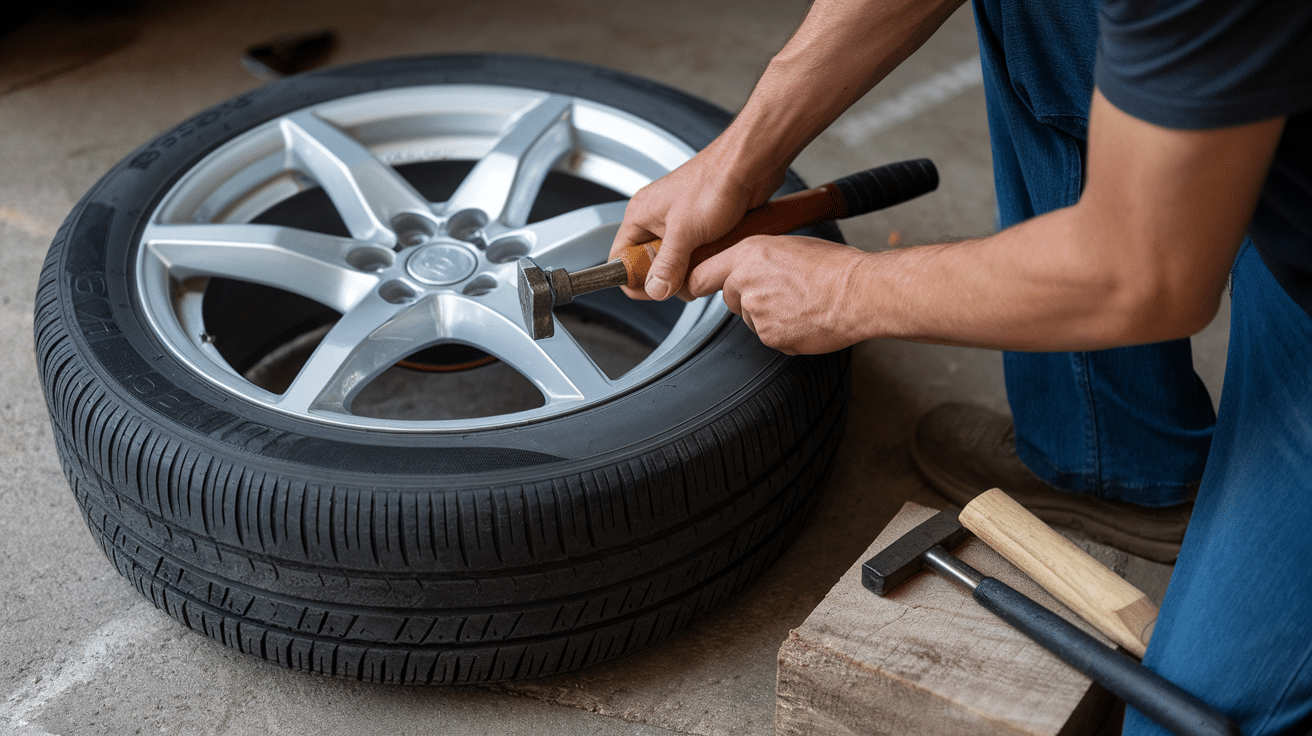
If the damage is minor and you feel comfortable working with tools, you may be able to fix a bent rim yourself. DIY repair kits are available online or at automotive stores and typically include tools to straighten minor bends. Here’s what you’ll need for a DIY fix:
- A hammer or mallet: Tap the rim back into shape.
- A block of wood: To protect the rim from further damage while you hammer it.
- A jack and jack stand: To safely lift the car off the ground.
Step 1: Lift the Car & Inspect the Rim
- Use a jack to lift the car and secure it with jack stands. Make sure the car is stable before starting any repair work. Use the lug wrench to remove the tire from the rim.
- Place the rim on a flat surface and inspect the damage. Use a ruler or measuring tape to check the depth of the bend. Minor bends can be fixed, but if the damage is too severe, you should replace the rim.
Step 2: Use a Block of Wood and a Rubber Mallet
- For small bends, position a block of wood over the bend on the rim. This will help protect the surface of the rim during the repair.
- Gently tap the bend back into shape using a rubber mallet or hammer. Be careful to tap lightly and gradually, as overdoing it could cause the rim to crack.
Step 3: Check the Shape & Reinstall the Tire
- After tapping, use your ruler or measuring tape to check if the rim is now even. Rotate the rim slowly and look for any uneven areas. If there are still some bends, repeat the tapping process until the rim is back in shape.
- Once the rim looks straight, check the tire pressure to make sure it’s within the recommended range. Reinstall the tire onto the rim and securely tighten the lug nuts.
Step 4: Lower the Car and Take a Test Drive
- Slowly lower the car using the jack. Once the car is back on the ground, double-check the lug nuts to make sure they are tight.
- Take your car for a short drive to test the repair. If you notice any vibrations or handling issues, it might be a sign that the rim isn’t properly aligned, and you may need to seek professional help.
Before you start, inspect the rim thoroughly. If you notice any cracks or major damage, it’s best to leave the repair to a professional.
DIY repairs are only recommended for small bends, and there’s always a risk that you might make the problem worse if you don’t have the right tools or experience.
Professional Repair
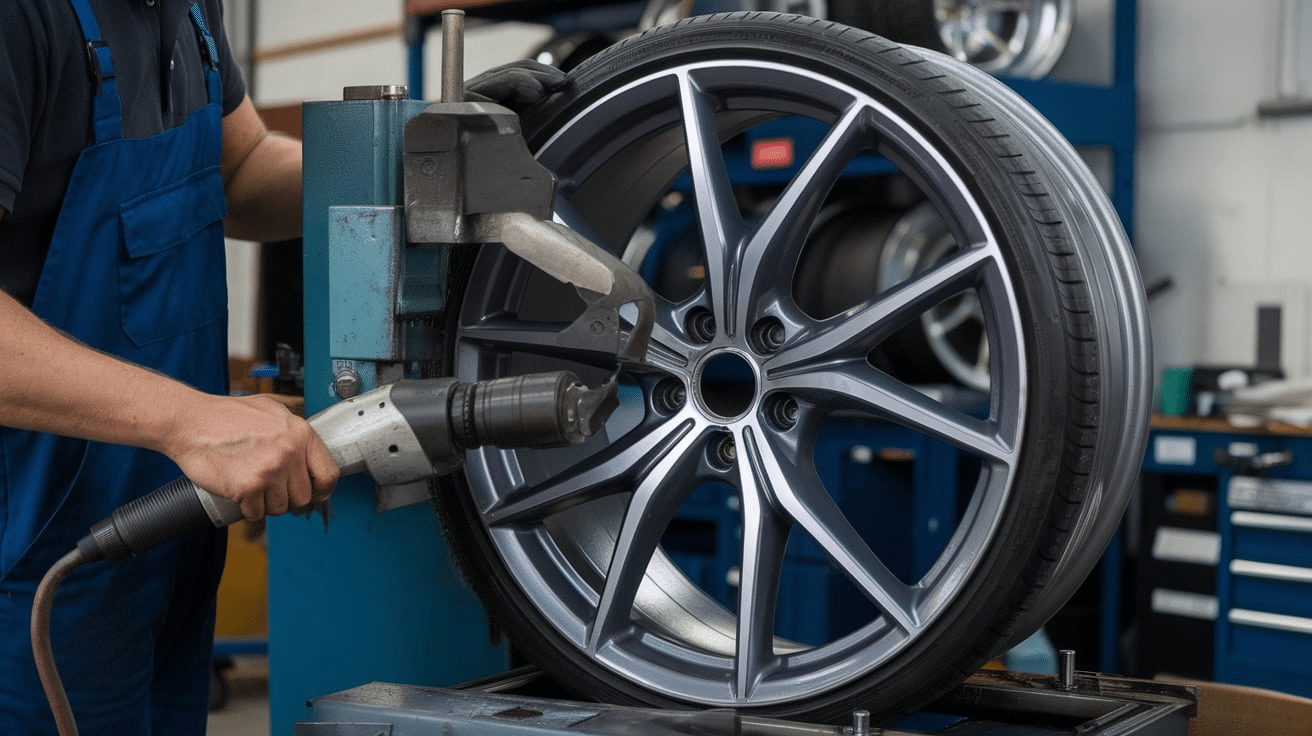
If you’re not confident in doing it yourself, or if the damage is more serious, professional repair is better. Professionals can access specialized tools and equipment, like rim straightening machines or welding equipment, to repair even more severe damage.
Here’s why you might want to go with a professional repair:
- Expert Assessment: A mechanic can inspect the rim and determine how to fix it.
- Advanced Equipment: Professionals have machines that can straighten the rim accurately, ensuring the repair is done safely.
- Safety: A professional repair ensures the rim is safe, especially if the damage is significant.
Professional repairs can be expensive, but they offer peace of mind and guarantee that your rim is repaired to a high standard. Costs for professional repairs vary based on the damage, but depending on the severity, you can expect to pay anywhere from $100 to $500.
When to Repair vs. Replace Tires with a Bent Rim
One of the most common questions people have when dealing with a bent rim is whether it’s better to repair it or replace it. Repair is the best option in some cases, but in others, replacing the rim is the safer choice. Here’s how to decide:
When to Repair
- If the bend is minor and doesn’t affect the rim’s structural integrity.
- If the rim is made of steel (which is easier to repair), the damage is only cosmetic.
- If the cost of repair is significantly lower than the cost of replacement.
When to Replace
- If the rim is cracked or severely bent, it could compromise its safety.
- If the rim is made of alloy, it is more difficult to repair and may be weakened by the damage.
- If the repair cost is nearly the same as buying a new rim.
Sometimes, if the damage is too severe or the cost of repair is too high, replacing the rim is the best option for your safety and your car’s performance.
Preventing Rim Damage
Every car owner wants to avoid rim damage. Preventing it doesn’t require major changes to your driving habits; just a few simple steps can keep your wheels safe and in good condition.
1. Avoid potholes and curbs: Avoid obstacles that can cause impact damage to your rims.
2. Maintain proper tire pressure: Underinflated tires are more likely to damage rims. Keep tires at the recommended pressure.
3. Drive carefully on rough roads: Slow down when driving over roads with large cracks or bumps to reduce stress on your rims.
4. Regular vehicle checks: Have your car inspected regularly to catch any issues early and prevent potential rim damage.
By following these simple tips, you can reduce the risk of damaging your rims. Taking care of your car and being mindful of road conditions will help ensure your rims stay in good shape for longer.
Conclusion
A bent rim can often be repaired, but the severity of the damage will determine the best course of action. Minor bends can usually be fixed with DIY repair or by a professional, while more serious damage may require rim replacement.
It’s always safest to consult a professional if you’re unsure about the damage. Remember, driving on a bent rim can be dangerous, so it’s important to address the issue as soon as possible.
By taking steps to prevent rim damage and knowing when to repair or replace it, you can keep your car in top shape and ensure a smooth, safe ride.
Frequently Asked Questions
Can all bent rims be repaired?
Not all bent rims can be repaired. Severe damage, such as cracks or deep bends, may require replacement.
How much does it cost to repair a bent rim?
Repair costs can range from $50 to $500, depending on the severity of the damage and whether you choose DIY or professional repair.
Is it safe to drive with a bent rim?
It’s not recommended to drive on a bent rim for long periods, as it can affect your car’s safety and handling and cause further damage.
What tools are needed for DIY rim repair?
Basic tools like a hammer, jack, block of wood, and a jack stand are needed for DIY repairs, but only for minor damage.
How can I prevent my rims from getting bent?
Avoid potholes, curbs, and rough roads. Keep your tires properly inflated and have regular maintenance checks to spot potential issues early.


